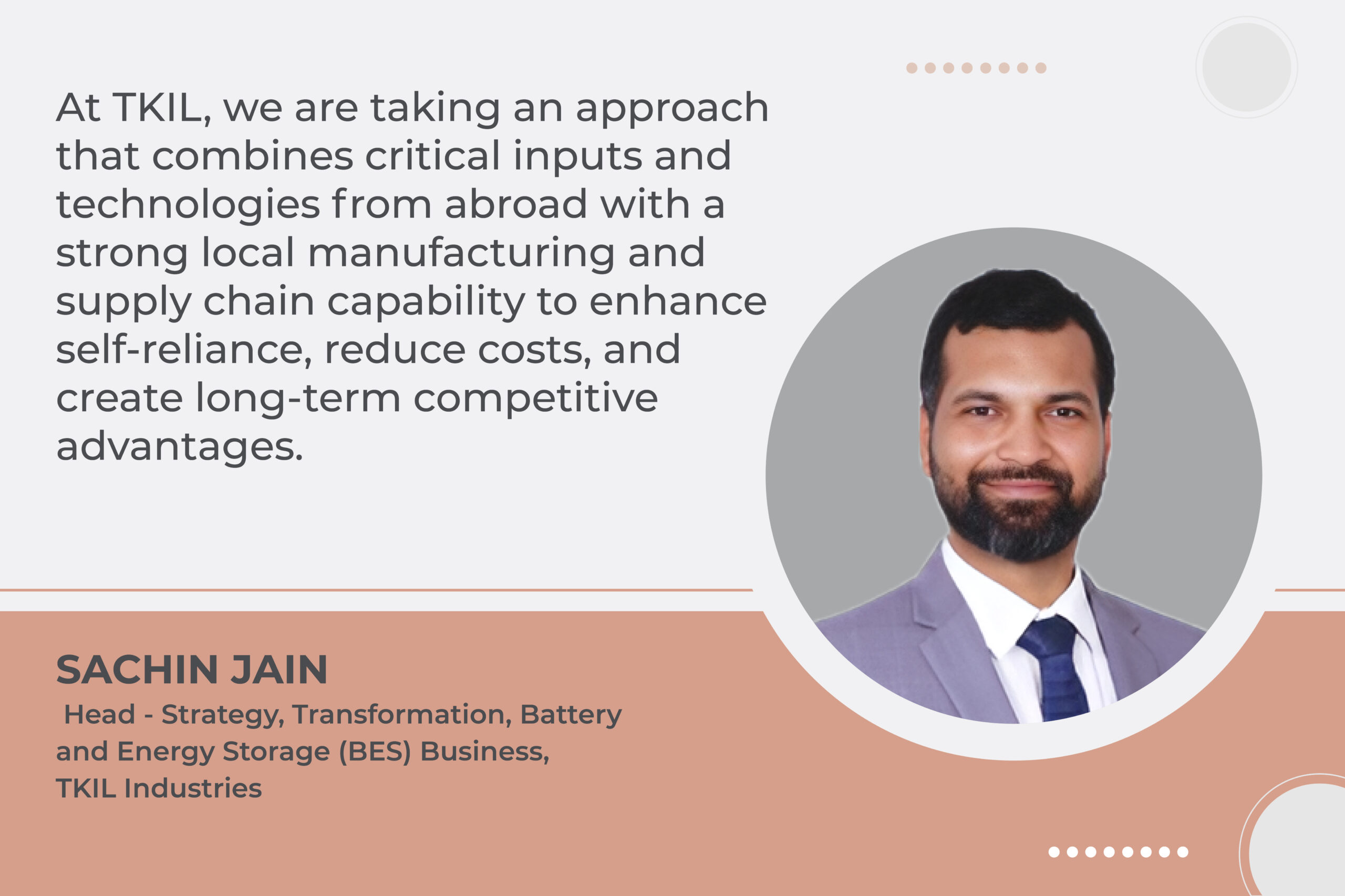India on Track to Lead the World in Rail Electrification and Storage Solutions
By Staff Report September 26, 2025 11:59 am IST
By Staff Report September 26, 2025 11:59 am IST

Exploration of new cell chemistry (like lithium, sodium) coupled with high-performance Battery Management Systems (BMS) would result in improved battery life and performance.
The Indian government’s target to have metro rail in 31 cities by 2029 presents significant opportunities in the rail batteries space. The demand for electrification and battery solutions across India is something TKIL Industries is well-positioned to capture with its existing portfolio of solutions. Sachin Jain expresses his views in talks with EPR.
What key breakthroughs in energy storage are vital for rail electrification and clean mobility, and how are you leveraging them?
In the medium to long term, the most critical breakthroughs in rail electrification and clean mobility will come from solutions that combine efficient energy storage with rapid response. We anticipate the deployment of Battery storage (at high-traffic substations and Depots) and supercapacitors (especially in metros) to reduce energy wastage due to braking, enable faster charging, and reduce maintenance-related carbon emissions. Further, exploration of new cell chemistry (like lithium, sodium) coupled with high-performance Battery Management Systems (BMS) would result in improved battery life and performance. TKIL is actively monitoring these developments and evaluating investments in solutions that align with India’s electrification needs. With recent focus on hydrogen rolling stock demonstration along select routes, we are also keen to contribute to the green hydrogen infrastructure for this segment.
How important are collaborations with OEMs, utilities or technology players in driving growth and ensuring large-scale deployment?
The large-scale deployment of energy storage and electrification on rail cannot happen in isolation. Collaboration across the entire ecosystem, including OEMs, utilities, technology developers, and infrastructure stakeholders, is necessary to accelerate the adoption of energy storage. This enables faster configuration of energy storage into existing rail infrastructure and reduces development costs for new and innovative solutions.
We view collaboration as a vital strategy for growing our business. Collaborating with stakeholders across the charging and storage value chain can enable us to achieve our goal of providing reliable, future-ready storage solutions to support India’s clean mobility objectives quickly and efficiently.
How do you balance localisation of supply chains with global technology partnerships?
While India will continue to rely on imports for inputs such as minerals, chemical materials, and specialised equipment, sizeable parts of the manufacturing value chain will see increased localisation in the medium to long term. This will be further accelerated by initiatives like the Production-Linked Incentive (PLI) programme, which is prompting manufacturers to invest in battery and component factories. At TKIL, we are taking an approach that combines critical inputs and technologies from abroad with a strong local manufacturing and supply chain capability to enhance self-reliance, reduce costs, and create long-term competitive advantages.What is your outlook for this sector over the next 5–10 years?
With one of the world’s largest railway networks undergoing electrification, India presents both a sizable market for the deployment of electric and energy storage solutions, as well as a fertile ground for innovation. Over the next decade, we see India’s role shifting from being a consumer of cost-effective energy storage technologies to an exporter of these solutions. In fact, we see excellent opportunities in supporting this journey through its world-class manufacturing and fabrication capability. We are already exploring the indigenisation of select modules for both domestic demand and export markets.
What are the biggest barriers to scaling electrification and storage today, and how can industry and government work together to overcome them?
The biggest barriers to scaling electrification and storage today are upstream material supply constraints, challenges in capital expenditure (capex) financing, and an evolving regulatory framework surrounding energy storage systems. India continues to rely on imports for critical inputs, has high upfront capital expenditure for depot electrification, and the deployment of wayside BESS creates funding challenges. A lack of a uniform, country-wide regulatory framework results in execution delays. However, joint efforts from industry and government can help resolve these challenges through initiatives such as a strong localisation focus across the energy storage value chain, innovative funding models (including viability gap funding at early stages), and harmonised regulations and approval procedures pan-India.
While obstacles exist today, we at TKIL believe that these challenges yield opportunities for effective collaboration to drive innovation and growth in this space.
*******************
We use cookies to personalize your experience. By continuing to visit this website you agree to our Terms & Conditions, Privacy Policy and Cookie Policy.